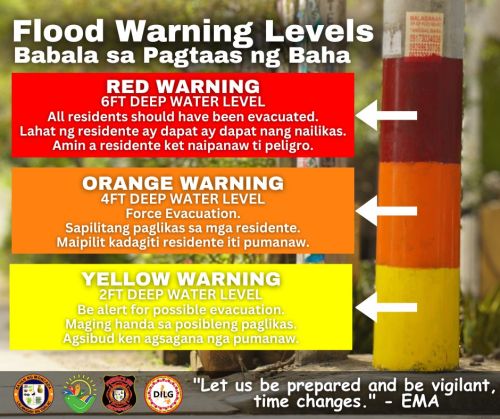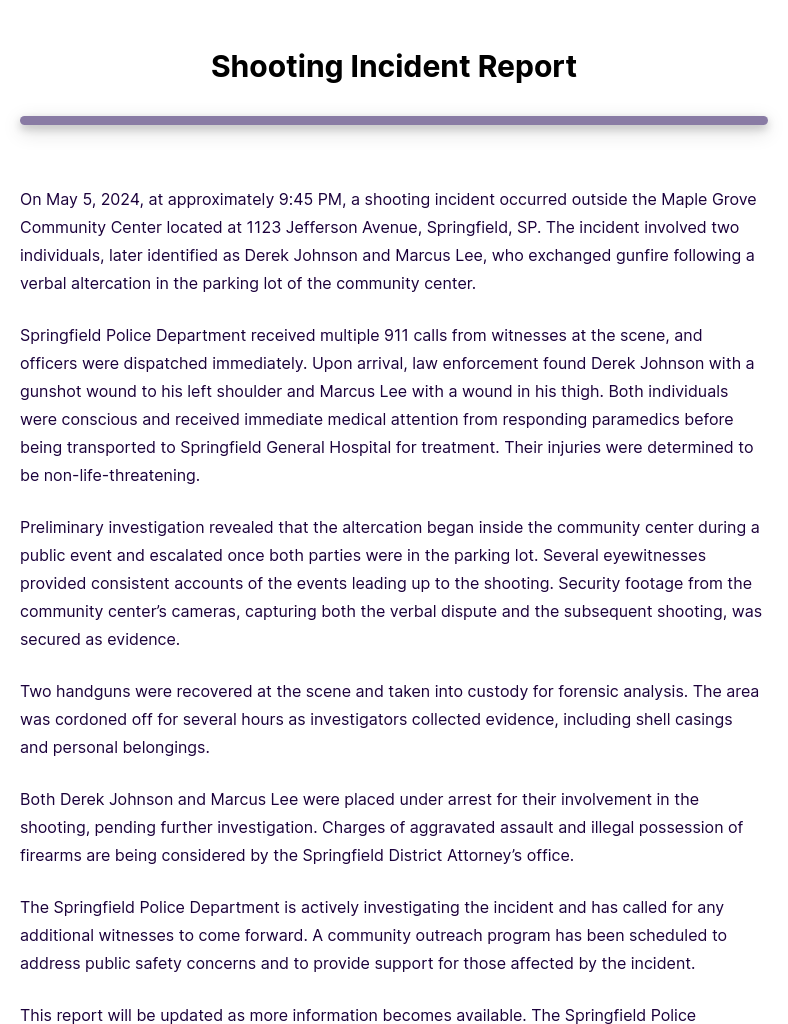Flash Flood Warning System: Protecting Yourself From Sudden Flooding

Table of Contents
Understanding Your Local Flash Flood Warning System
A reliable Flash Flood Warning System is your first line of defense. Knowing where to look for warnings and understanding what they mean is paramount.
Official Warning Sources
The most crucial aspect of any Flash Flood Warning System is access to official alerts. These warnings are issued by trusted sources and provide timely information to help you prepare and stay safe.
- National Weather Service (NWS) Alerts: The NWS is the primary source for weather-related warnings in the United States. Sign up for alerts on their website, weather.gov.
- Wireless Emergency Alerts (WEA): These urgent alerts are pushed directly to your smartphone, even if you don't have a weather app open. Ensure your phone's alert settings are enabled.
- Local News and Television Stations: Your local news channels often provide up-to-the-minute weather updates and flash flood warnings during broadcasts.
- Weather Apps: Reputable weather apps like AccuWeather, The Weather Channel, and more offer customizable alerts for your location. Consider having several apps for redundancy.
- Emergency Broadcast System (EBS): Be aware of emergency alerts broadcast on radio and television.
Recognizing Warning Signs
While official warnings are essential, understanding visual and auditory cues that might precede a flash flood allows for proactive action. A Flash Flood Watch indicates conditions are favorable for flash flooding, while a Flash Flood Warning means it's happening or is imminent.
- Rapidly Rising Water Levels: A sudden and significant increase in water levels in streams, rivers, or normally dry washes is a major warning sign.
- Changes in Water Color: Muddy or unusually dark water indicates increased runoff from upstream areas, a key indicator of potential flash flooding.
- Strong Winds: Intense wind gusts can sometimes precede torrential rainfall associated with flash floods.
- Unusual Sounds: Rumbling sounds from upstream or the unusual roar of water can signal imminent danger.
Creating a Personal Flash Flood Preparedness Plan
A comprehensive Flash Flood Warning System extends beyond simply receiving alerts. Proactive planning is vital.
Developing an Evacuation Plan
Having a detailed evacuation plan is critical. This isn't just about knowing where to go; it's about a coordinated effort ensuring the safety of your family or household.
- Designated Meeting Points: Identify several meeting points both inside and outside your home, in case escape routes are blocked.
- Escape Routes: Plan multiple escape routes from your home and neighborhood, considering potential road closures.
- Emergency Kit: Prepare a waterproof emergency kit containing water, non-perishable food, a first-aid kit, important documents (in waterproof bags), flashlights, batteries, and any necessary medications.
- Safe Locations: Identify high-ground locations nearby where you can take shelter if necessary.
- Communication Methods: Establish a method of communication with family members in case you get separated (e.g., designated contact person, pre-arranged meeting spots).
Protecting Your Property
Taking steps to minimize potential flood damage to your property is a crucial component of your Flash Flood Warning System.
- Move Valuables to Higher Ground: Relocate important documents, electronics, and other valuables to upper floors or higher shelves.
- Install Flood Barriers: Consider installing sandbags or temporary flood barriers around your home’s foundation, especially if you live in a flood-prone area.
- Clear Drains and Gutters: Ensure that gutters and drains around your house are clear to prevent water from accumulating.
- Flood Insurance: Assess whether flood insurance is necessary for your property. Standard homeowner's insurance typically doesn't cover flood damage.
Responding to a Flash Flood Warning
Your response to a Flash Flood Warning dictates your safety and well-being. Swift and decisive action is critical.
Immediate Actions
The moment a Flash Flood Warning is issued, act immediately. Every second counts.
- Move to Higher Ground: This is the most crucial step. Seek higher ground immediately and do not attempt to cross flooded areas.
- Avoid Driving Through Flooded Areas: Even seemingly shallow floodwaters can sweep a vehicle away. Turn around, don’t drown.
- Contact Emergency Services: Call emergency services (911 or your local emergency number) if you are in immediate danger or need assistance.
- Stay Informed: Continue monitoring official sources for updated information and instructions.
Post-Flood Actions
After a flash flood subsides, there are still important steps to take.
- Check for Damage: Carefully assess your property for damage, taking necessary safety precautions.
- Report Damage to Authorities: Report any significant damage to your local authorities and insurance company.
- Seek Assistance: If you need assistance with cleanup, shelter, or other resources, contact FEMA, the Red Cross, or other relevant relief organizations.
- Safe Cleanup: When undertaking post-flood cleanup, always prioritize safety. Wear protective gear and be aware of potential hazards like downed power lines and contaminated water.
Conclusion
A comprehensive Flash Flood Warning System is a combination of proactive planning and swift response. Understanding your local warning sources, recognizing warning signs, developing a personal evacuation and property protection plan, and taking immediate action upon receiving a Flash Flood Warning are all essential components. By integrating these strategies into your life, you significantly improve your chances of surviving and minimizing the impact of a flash flood. Don't wait until it's too late! Develop your own personal Flash Flood Warning System plan today. Stay informed through reliable sources like the National Weather Service (weather.gov) and make sure your family is prepared. Your safety depends on it.

Featured Posts
-
 Naomi Campbells Potential Met Gala 2025 Absence The Anna Wintour Conflict
May 25, 2025
Naomi Campbells Potential Met Gala 2025 Absence The Anna Wintour Conflict
May 25, 2025 -
 Should You Buy Apple Stock Before The Q2 Report
May 25, 2025
Should You Buy Apple Stock Before The Q2 Report
May 25, 2025 -
 Alternative Delivery Services Thrive Amidst Canada Post Challenges
May 25, 2025
Alternative Delivery Services Thrive Amidst Canada Post Challenges
May 25, 2025 -
 Southern Vacation Hotspot Responds To Negative Safety Rating After Shooting Incident
May 25, 2025
Southern Vacation Hotspot Responds To Negative Safety Rating After Shooting Incident
May 25, 2025 -
 Vestidos Iconicos El Baile De La Rosa 2025 Y Sus Looks Mas Memorables
May 25, 2025
Vestidos Iconicos El Baile De La Rosa 2025 Y Sus Looks Mas Memorables
May 25, 2025
Latest Posts
-
 Madrid Open Update De Minaurs Early Exit And Swiateks Dominant Win
May 25, 2025
Madrid Open Update De Minaurs Early Exit And Swiateks Dominant Win
May 25, 2025 -
 De Minaur Out Of Madrid Open After Straight Sets Loss Swiatek Triumphs Over Keys
May 25, 2025
De Minaur Out Of Madrid Open After Straight Sets Loss Swiatek Triumphs Over Keys
May 25, 2025 -
 Alex De Minaurs Madrid Open Exit Straight Sets Defeat And Swiateks Victory
May 25, 2025
Alex De Minaurs Madrid Open Exit Straight Sets Defeat And Swiateks Victory
May 25, 2025 -
 Grand Slam Debut Alex Eala Set For Paris
May 25, 2025
Grand Slam Debut Alex Eala Set For Paris
May 25, 2025 -
 Ealas Grand Slam Debut In Paris A Look Ahead
May 25, 2025
Ealas Grand Slam Debut In Paris A Look Ahead
May 25, 2025
